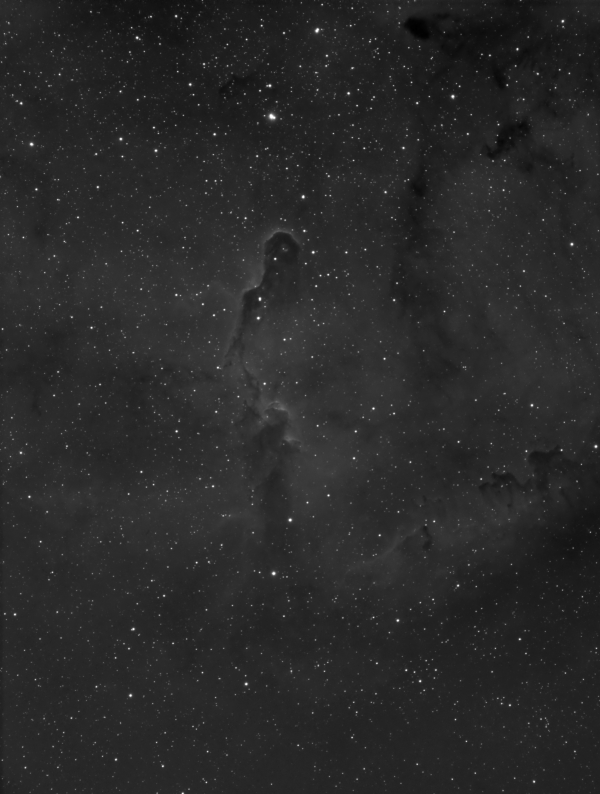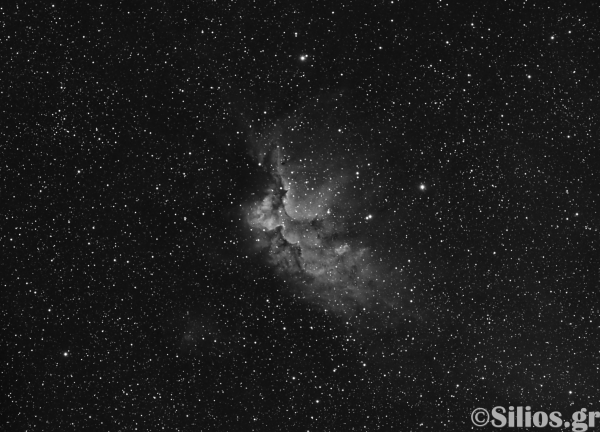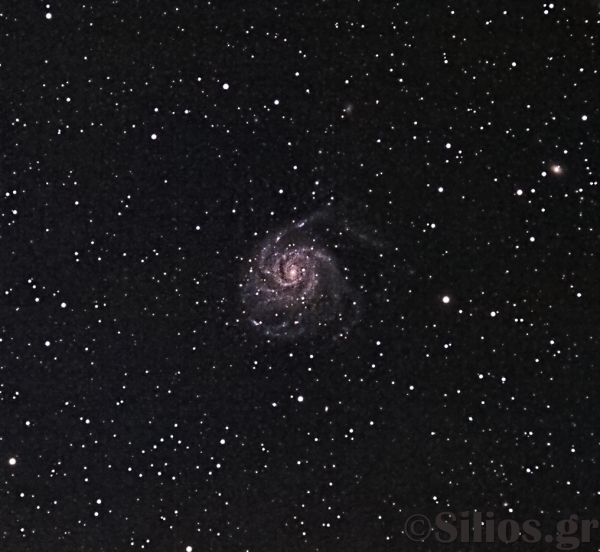This is a “quickie” of IC1396 the Elephant’s trunk nebula with minor noise reduction and stretching.
The Elephant’s Trunk nebula is a concentration of interstellar gas and dust within the much larger ionized gas region IC 1396 located in the constellation Cepheus about 2,400 light-years away from Earth. The piece of the nebula shown here is the dark, dense globule IC 1396A; it is commonly called the Elephant’s Trunk nebula because of its appearance at visible light wavelengths, where there is a dark patch with a bright, sinuous rim. The bright rim is the surface of the dense cloud that is being illuminated and ionized by a very bright, massive star (HD 206267) that is just to the west of IC 1396A. (In the Figure above, the massive star is just to the left of the edge of the image.) The entire IC 1396 region is ionized by the massive star, except for dense globules that can protect themselves from the star’s harsh ultraviolet rays.
The Elephant’s Trunk nebula is now thought to be a site of star formation, containing several very young (less than 100,000 yr) stars that were discovered in infrared images in 2003. Two older (but still young, a couple of million years, by the standards of stars, which live for billions of years) stars are present in a small, circular cavity in the head of the globule. Winds from these young stars may have emptied the cavity.
The combined action of the light from the massive star ionizing and compressing the rim of the cloud, and the wind from the young stars shifting gas from the center outward lead to very high compression in the Elephant’s Trunk nebula. This pressure has triggered the current generation of protostars.
Technical details :
Sky-Watcher 80ED Pro Black Diamond
SBIG 8300M
HEQ5 Pro
Guiding camera: QHY CCD QHY5 mono
Filters: Baader 7nm Ha 2”
Accessories: Starlight Xpress Starlight Xpress FW 5*2”
Resolution: 2504×3314
Dates: Oct. 14, 2014
Locations: Home obs
Frames: Baader 7nm Ha 2”: 30×600″ -5C bin 1×1
Integration: 5.0 hours
Darks: ~20
Flats: ~20
Bias: ~100
Avg. Moon age: 20.49 days
Avg. Moon phase: 67.31%
Bortle Dark-Sky Scale: 8.00
Mean FWHM: 1.60
Temperature: 14.00
RA center: 323.617 degrees
DEC center: 57.559 degrees
Pixel scale: 1.856 arcsec/pixel
Orientation: -89.351 degrees
Field radius: 1.071 degrees


